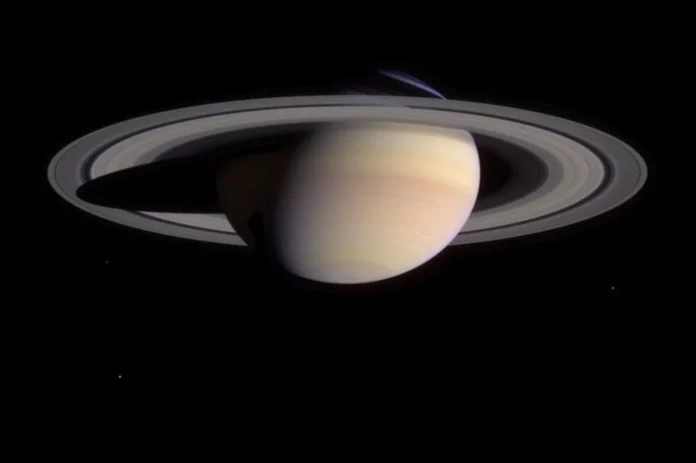Saturn will temporarily lose its iconic appearance from our Earthly vantage point, appearing as a pale yellow sphere without the swirling rings that envelop the gas giant.
The billions of rocky and icy chunks swirling around Saturn will disappear from our view on Sunday, March 23, when the thin edges of the planet’s rings will point toward Earth and seemingly disappear from view. This rare phenomenon occurs every 13-15 years when the Earth passes through the plane of Saturn’s rings. The last time the Earth saw this rare sighting of the gas giant was in 2009.
Saturn is surrounded by billions of comet fragments, asteroids, and satellite debris that have been trapped in the planet’s orbit. The exquisite system of rings extends up to 175,000 miles (282,000 kilometers) from the planet and consists of tiny ice grains the size of a speck of dust to chunks the size of a house, according to NASA.
Like the Earth, Saturn’s axis is tilted by 26.73 degrees. As it orbits the Sun, Saturn’s inclination changes in relation to the Earth, causing its rings to disappear from our view when our planet crosses their plane. When Saturn is tilted toward the Earth, we see the upper side of its rings, and when the planet is tilted toward us, we see the lower side. However, between these two phases, the rings disappear from our field of view. With a powerful telescope, you can see a very thin line running around the middle of Saturn.
According to the website in-the-sky.org, the crossing will begin at approximately 12:04 p.m. EDT on Sunday. Saturn’s rings will not be fully visible from Earth for several more months, and we may not see them again until November, earth.com reports.
Sky watchers in the mid-southern latitudes will have the best chance of seeing a naked Saturn if they can spot it in the morning twilight shining over the eastern horizon, space.com reports. However, residents of the middle northern latitudes will have a harder time seeing Saturn, as the planet will be close to the Sun at dawn and will be under the tilted morning ecliptic.
While not ideal viewing conditions for most, this celestial phenomenon is a rare opportunity to see the planets move around our shared star.









